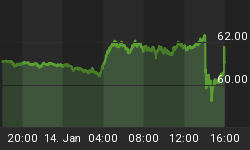The CDC’s National Center for Health Statistics released some alarming data earlier this week that surprisingly had absolutely nothing to do with Covid for a change.
The report showed that the birthrate in the United States last year declined to its lowest level on record ever since the government began collecting data more than 110 years ago.
This new record low birth rate breaks the previous record set in 2018, which broke the previous record set in 2017, which broke the previous record set in 2016. . .
You get the idea. This has been a long-term issue: people just aren’t having babies anymore. And it’s not just in the Land of the Free.
Fertility rates are low all over the developed world– far below the ‘population replacement level’ of around 2.2 children per mother.
(This is the number of children that demographers say will maintain a steady population.)
In the United States, the average number of births per mother is currently about 1.7. In Australia it’s also around 1.7. In Spain, it’s just 1.5. In Japan, 1.44. In Italy, 1.31. In South Korea, 0.92. And in Singapore, just 0.83.
This list goes on and on. And the fertility rates in most of these countries are hovering near record lows.
Even many large, developing countries have low or declining fertility rates.
In Brazil, for example, the average woman has 1.74 children, which is below the population replacement level. And the rate has been falling steadily for decades.
Even India’s birth rate has been declining, down to just 2.24– less than half the level from the 1980s.
And these statistics were pre-Covid. It certainly stands to reason that with all the economic uncertainty and virus fears, people will delay having children, and potentially have fewer.
This is pretty normal in any economic crisis; according to IMF data, birth rates worldwide plunged following the Great Recession of 2008/2009.
Now, it’s not like a low fertility rate means that some country is going to vanish into the history books.
In Spain, the population declines by an average of just 0.21% per year. And Japan’s population declines by roughly 0.12% per year.
These are trivial numbers… unless you’re thinking about Social Security and national pension funds.
The idea behind most social security programs around the world is that everyone with a job gives up a portion of his/her wages to pay monthly benefits to people who are currently retired.
We do this for our entire careers, with the promise that, when we reach retirement age, the younger generations will pay for our benefits.
This scheme clearly requires a steadily rising population in order to be sustainable:
If you have 1 person receiving benefits today, you’d need 3-4 people paying taxes to support that single beneficiary.
After a few decades, those 3-4 would be retired, requiring around 10-15 workers to support them. And when those 10-15 people retire, you’d need 30-50 workers to support them.
It’s easy to see why low birth rates and declining populations can cause these social security programs to fail.
But Covid is having an even deeper impact on these programs. Because in addition to making the fertility problem worse, Covid has also vanquished tax revenue.
In the US, for example, Social Security is funded almost exclusively by payroll taxes. So when tens of millions of people lose their jobs, payroll tax revenue declines, and Social Security runs a big deficit.
I’ve been writing about this for years: Social Security is already in deep trouble.
The program’s Trustees (which include the Treasury Secretary of the United States) write in their most recent annual report that Social Security’s trust funds will run out of money by 2035.
Again, though, that was pre-Covid. Financial crises tend to make these things a lot worse.
Back in 2007, the last year before the Great Recession, Social Security projected it would run out of money in 2041.
But the financial crisis took such a toll that, after it was over, they revised their projected insolvency date down to 2035.
Social Security hasn’t updated its projection yet to incorporate the Covid impact, and they probably won’t until next year.
But the Bipartisan Policy Center ran the numbers using Social Security’s own financial model. And according to their analysis, Social Security is now set to run out of money in 2029. Related: Why Big Finance Is Bailing On Fossil Fuels
That might seem like a long time from now, but from a retirement prospective, it’s just around the corner.
And options for Social Security are extremely limited; the government will either have to (a) radically increase payroll tax rates, and/or (b) make drastic cuts to the monthly benefit they’ve been promising people for decades.
Neither option is good, and most likely they’ll end up doing a combination of both. But not yet.
As this pandemic has proven, they’ll wait until it becomes a major catastrophe before even acknowledging the problem, and then they’ll overreact with worst Draconian measures imaginable.
But any rational person who thinks long-term, however, still has time to plan.
By Zerohedge.com
More Top Reads From Safehaven.com:

















